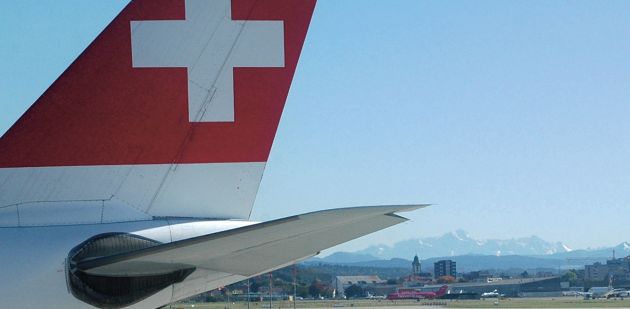For the past twenty years, airlines have been steadily improving safety by enhancing communication between crew members. Now this expertise is being passed on to Swiss healthcare workers.

Shaken by a spate of disasters in the 1990s, the airline industry had to rethink the way it did things, mainly focusing on the communication mechanisms of its crew members. “The human factor is behind 75% of all in-flight problems,” says Frédéric Macheret, an Airbus A320 captain and trainer for Swiss International Air Lines. “At the time, we noted that many incidents were related to a lack of coordination and leadership within crews.” Oddly, this was a period when the technical resources available to the airline industry were actually advancing. “But the more complex the technology, the more the human aspect has to be improved. No one can go off and work in a corner. Sharing information is vital.”
Frédéric Macheret believes that hospitals, which are subject to growing stress and constant technological innovation, currently face the same challenges that aviation grappled with twenty years ago. Mistakes happen, either due to inadvertence or poorly managed incidents. But to better prevent them, Pierre Hoffmeyer, physician in chief at the Orthopaedic Surgery Service of Geneva University Hospitals (HUG), brought the experience of SWISS on board four years ago. The training programme brings together doctors, anaesthesiologists, technicians, nurses and airline pilots to come up with new group strategies for handling incidents and stress.
In a one-day workshop, participants cover techniques used by airlines, such as a checklist. This before take-off procedure is used to make sure that all participants understand the flight duration and other key information. It unites the crew towards achieving a common goal. And ensures that everyone is in position in the event of an emergency.
Another highlight is the completely confidential dialogue about problem situations. “This provides the unique opportunity to discuss stress management, teamwork or the impact of a lack of communication, outside of the purely professional environment,” says trainer Domizio Suva, senior visiting physician and head of the Septic Orthopaedic Unit at HUG. “They don’t have this time to debrief in a normal work day.”
Hospitals, which are subject to growing stress and constant technological innovation, currently face the same challenges that aviation grappled with twenty years ago.
Lausanne University Hospital (CHUV) has joined the movement. Although it has not developed a formal partnership with airlines, for the past two years the Vaud-based facility has been applying certain approaches used in aviation to its training programmes. “These methods mainly involve crew resource management techniques, such as those practised in Geneva in partnership with SWISS,” says Pierre Gallant, head of the CHUV training centre.“The purpose of these procedures is to develop leadership and relational skills, which were analysed as having frequently been the cause of accidents.”
The airline model can obviously not be transposed into the medical environment in all respects, but the training programme is gradually being polished as it develops. And it has met with incredible success among healthcare staff. At the HUG, it is impossible to quantify the drop in incidents, but several studies have shown that all participants have gained new knowledge, which varies depending on their profession. A culture of safety has emerged, based on anticipating problems before they occur. The social skills of surgeons, who were once used to working alone like pilots, have been developed.
And the experiment has not stopped with French-speaking Switzerland. Since 2010, Zurich University Hospital along with its Cardiovascular Surgery and Neurosurgery Clinics has set up similar training programmes. The private hospital GZO in the Zurich Oberland has also enlisted SWISS to train its healthcare staff. This programme differs in that it focuses on the parallels between patients and passengers. A way of better understanding the notion of patients as customers.
Using techniques from the aeronautical industry has helped improve teamwork at CHUV. The Lausanne University Hospital has been using a safety checklist since 2012 to provide better patient care before and during surgery. These checklists have helped improve processes in all the services where they are used.